Explore Ulaanbaatar - Mongolia Travel, Asia
Ulaanbaatar, located in the center of Mongolia, is a city that perfectly combines old traditions and modern energy. Mongolia's capital and largest city serves as the country's cultural, political, and economic hub. From its bustling markets to serene monasteries, Ulaanbaatar offers a unique travel experience that caters to history buffs, culture enthusiasts, and adventure seekers alike.
Population: Approximately 1.7 million in 2021.
Economy: Headquarter of the largest corporations and conglomerates of Mongolia and main industrial center of the country.
Landmarks: Gandan Monastery, Sükhbaatar Square, and Chinggis Khaan Statue Complex.
Mongolia
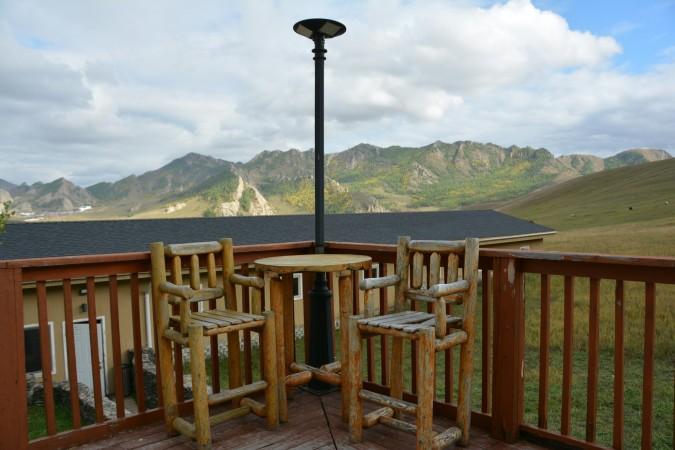
Overview of Ulaanbaatar
History & Cultural Influence
Ulaanbaatar's history is as diverse and dynamic as the city itself. Founded in 1639 as a nomadic Buddhist monastic center, it has evolved through centuries of cultural and political change. The city moved several times before settling in its current location in 1778. Gandan Monastery, the largest and most significant monastery in Mongolia, stands as a testament to the city's Buddhist heritage. Meanwhile, Sükhbaatar Square, named after a revolutionary hero, symbolizes Mongolia's path to independence.
Interaction with The Locals
One of the best ways to experience Ulaanbaatar is through its people. The locals now mostly live in the urban area, however, many still reside all across the vast steppe in an attempt to preserve the Mongolian nomadic culture and the natural heritage. Mongolian known for their hospitality and warmth, therefore, engaging with Ulaanbaatar's residents offers a deeper understanding of Mongolian culture and lifestyle.
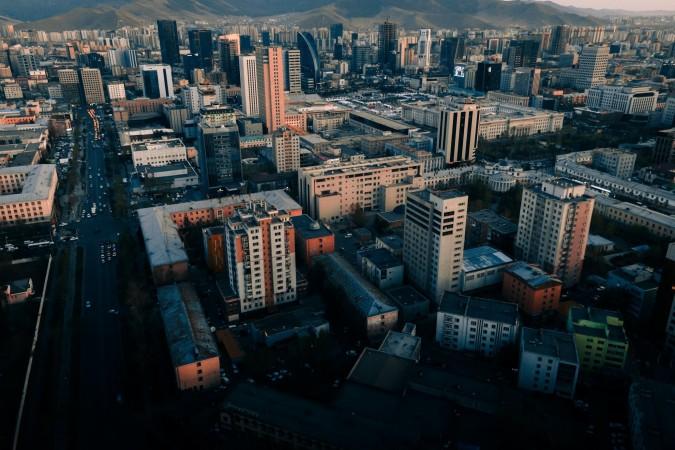
Modern Ulaanbaatar - © Uudam Mendsaikhan
Top Attractions in Ulaanbaatar
Ulaanbaatar boasts a variety of attractions that cater to different interests. These attractions highlight the city's rich history, cultural depth, and scenic beauty, making Ulaanbaatar a compelling destination for all travelers.
- Gandan Monastery: This impressive complex is a living symbol of Mongolia's Buddhist traditions. Wander through its serene courtyards and marvel at the towering statue of Migjid Janraisig.
- Sükhbaatar Square: The central square of Ulaanbaatar is surrounded by important buildings, including the Government Palace. It's a great place to learn about Mongolia's history and watch daily life unfold.
- National Museum of Mongolia: Dive into Mongolia's rich history, from prehistoric times to the present day. The museum's displays offer a thorough history of the country's cultural progress.
- Zaisan Memorial: Located on a hill south of the city, this memorial honors Soviet soldiers who died in World War II. The panoramic views of Ulaanbaatar from the top are breathtaking.
- Bogd Khan Palace Museum: The winter palace of the last Mongolian emperor, Bogd Khan, is now a museum. It offers a fascinating insight into the life and times of Mongolia's royalty.
- Chinggis Khaan Statue Complex: Although located just outside of Ulaanbaatar, this massive statue of Chinggis Khaan (Genghis Khan) is a must-visit. It stands 40 meters tall and offers a panoramic view of the surrounding area from the top.
- Choijin Lama Temple Museum: This architectural gem is a former monastery that now serves as a museum. It features stunning Buddhist art and artifacts, offering a glimpse into Mongolia's spiritual heritage.
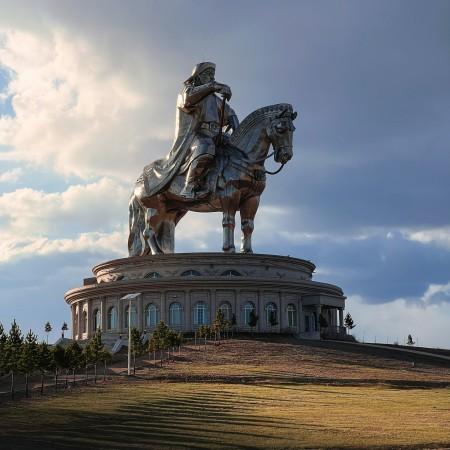
Chinggis Khaan Statue - © Alexander Popovkin
Must-Try Dishes in Ulaanbaatar
Mongolian cuisine is hearty and flavorful, reflecting the country's nomadic heritage and harsh climate. In Ulaanbaatar, you can savor a variety of traditional dishes that offer a true taste of Mongolia. For an authentic dining experience, visit local restaurants and food markets where you can enjoy these dishes prepared by skilled chefs who understand the nuances of Mongolian cooking.
- Buuz: These steamed dumplings are filled with seasoned meat, usually mutton or beef. They are a staple in Mongolian cuisine and a must-try for any visitor.
- Khorkhog: A unique barbecue dish where meat is cooked with hot stones inside a sealed container. The result is tender, flavorful meat that's a delight for the senses.
- Boodog: This traditional dish involves cooking a whole goat or marmot from the inside out using heated stones. It's an adventurous culinary experience that reflects Mongolia's unique food traditions.
- Tsuivan: A noodle stir-fry made with meat and vegetables. It's a comforting and satisfying meal that's popular among locals.
- Airag (Fermented Mare's Milk): This traditional Mongolian beverage is slightly alcoholic and made from fermented mare's milk. It's a unique taste experience and a significant part of Mongolian culture.
- Khuushuur: Similar to buuz but fried instead of steamed, these meat-filled pastries are crispy on the outside and juicy on the inside. They are often enjoyed during the Naadam Festival.
- Guriltai Shul (Noodle Soup): A hearty soup made with meat, vegetables, and noodles. It's a soothing dish ideal for warming up on a cold day.
- Mongolian Milk Tea (Suutei Tsai): This traditional tea is made with milk, water, tea leaves, and salt. It's a staple in Mongolian hospitality and often accompanies meals.
- Aaruul (Dried Curd): A typical Mongolian snack composed of dried curd. It's hard and has a unique, tangy flavor. Aaruul is often carried by nomads for its long shelf life and nutritional value.
- Bantan: A thick soup prepared with flatbread crumbs, meat, and stock. It's a traditional dish often served to those recovering from illness due to its nutritious properties.
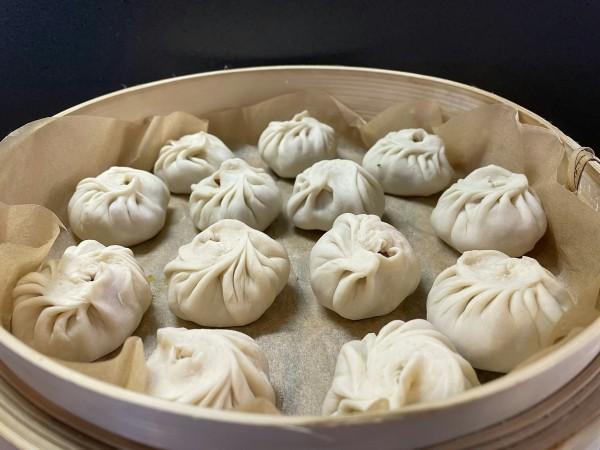
Buzz, Mongolian steamed dumpling - © Tuguldur Baatar
Festivals & Local Celebrations
Naadam Festival
The Naadam Festival, held every July, is Mongolia's most significant and celebrated event. The "Three Manly Games," as they are known, include ancient Mongolian wrestling, horse racing, and archery. Naadam is not just a sports event but a cultural celebration that unites the nation. Visitors can witness the fierce competitions and enjoy the festive atmosphere filled with food stalls and souvenir vendors.
Tsagaan Sar (Lunar New Year)
Tsagaan Sar, or Mongolian Lunar New Year, symbolizes the start of spring and is one of the most important festivals in Mongolia. Celebrated in late January or February, it involves various rituals and customs. Families gather to pay respects to elders, exchange gifts, and enjoy a feast of traditional dishes such as buuz and airag. Homes are cleaned and decorated, and special ceremonies honor ancestors. Visitors during Tsagaan Sar can experience the warmth of Mongolian hospitality and the richness of its traditions.
Golden Eagle Festival
Although not held in Ulaanbaatar, the Golden Eagle Festival in the western region of Mongolia is a unique event worth mentioning. This event commemorates the old custom of eagle hunting, with Kazakh hunters demonstrating their abilities. Visitors can witness breathtaking displays of eagles swooping down to catch prey, traditional horseback riding, and cultural performances. The event provides a unique look into the lives of nomadic Kazakh hunters and their spectacular birds of prey.
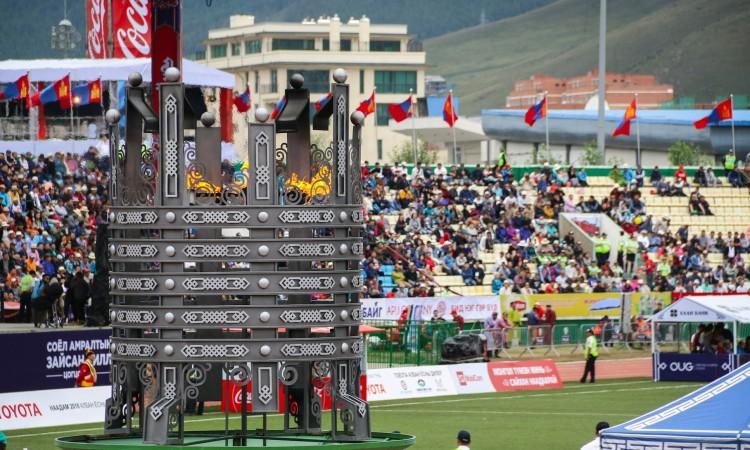
Naadam Festival opening ceremony - © Bishrelt Erdenebayar
What to Do in Ulaanbaatar
Ulaanbaatar offers a wide range of activities for tourists to enjoy, from exploring the great outdoors to diving into the city’s cultural scene.
Hiking and Nature Walks
Ulaanbaatar is surrounded by beautiful landscapes, making it a great starting point for outdoor adventures. Bogd Khan Uul National Park, located just south of the city, offers hiking trails with stunning views. Another popular spot right next to Ullaanbaatar is the Terelj National Park, known for its dramatic rock formations and lush valleys.
Horseback Riding
Experience Mongolia’s nomadic heritage by going horseback riding in the countryside. You can also choose to participate in guided rides if it’s your first time riding a horse. With this option, you can explore the vast steppes to every corner and meet local herders. It’s an excellent way to immerse yourself in the Mongolian nomadic lifestyle.
Cultural Tours
Join a guided tour to explore Ulaanbaatar’s rich history and culture. Visit the city’s museums, temples, and historical sites while learning about Mongolia’s fascinating past. Many tours also include traditional performances, giving you a taste of Mongolian music and dance.
Nomadic Family Visits
Spend a day or even a night with a nomadic family to experience their daily life. You’ll have the opportunity to participate in traditional activities such as milking cows, making dairy products, and herding livestock. This immersive experience provides a deeper understanding of Mongolia’s nomadic culture.
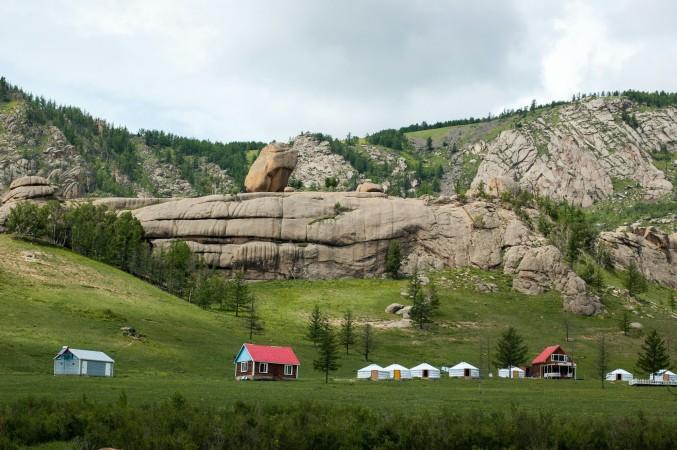
Nature Walks right outside Ulaanbaatar - © Tuguldur Baatar
Shopping in Ulaanbaatar
Ulaanbaatar offers a vibrant shopping scene where visitors can find everything from traditional crafts to modern fashion, providing visitors with plenty of opportunities to find memorable souvenirs and gifts. Whether you’re looking for traditional crafts or modern fashion, the city has something for every shopper.
State Department Store
The State Department Store, located in the heart of Ulaanbaatar, is a must-visit for shoppers. This iconic store offers a wide range of products, including clothing, electronics, groceries, and souvenirs. On the top floor, you’ll find a dedicated section for traditional Mongolian crafts, such as cashmere products, leather goods, and felt items.
Naran Tuul Market (Black Market)
For a more local shopping experience, head to Naran Tuul Market, also known as the Black Market. This bustling outdoor market is the largest in Ulaanbaatar and offers a variety of goods, from clothing and electronics to antiques and traditional crafts. Bargaining is anticipated, so be prepared to negotiate for the best deal.
Gobi Cashmere Factory Store
Mongolia is renowned for its high-quality cashmere, and the Gobi Cashmere Factory Store is one of the best places to buy it. The store offers a wide selection of cashmere products, including sweaters, scarves, and blankets. You can also learn about the cashmere production process and the craftsmanship behind these luxurious items.
Mary & Martha Mongolia
For unique and ethically made souvenirs, visit Mary & Martha Mongolia. This fair-trade shop offers handmade products crafted by local artisans, including jewelry, textiles, and home decor. Every purchase supports community development and helps preserve traditional Mongolian crafts.
Ikh Delguur
Another great shopping destination is Ikh Delguur, which translates to "Great Store." This shopping complex features a mix of local and international brands, offering a variety of clothing, accessories, and beauty products. It’s a perfect place to find trendy fashion items and unique Mongolian designs.
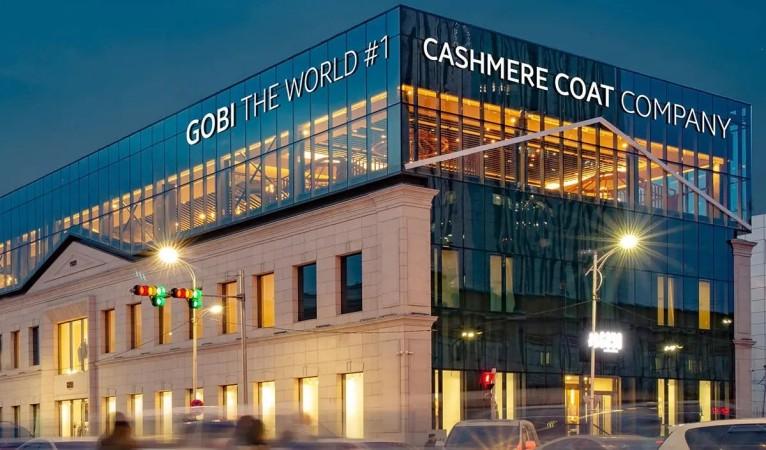
Gobi Cashmere Factory Storer - © GOBI Cashmere
Weather in Ulaanbaatar: Best Time to Visit
Ulaanbaatar’s unique climate and extreme seasonal variations offer distinct experiences for travelers throughout the year. Understanding the weather conditions in Ulaanbaatar and tourism trends can help you plan the perfect trip to Mongolia’s capital.
Spring in Ulaanbaatar
- Weather: Spring is a transitional period with fluctuating temperatures and occasional dust storms. The weather warms up, and the city begins to defrost.
- Tourism Trends: Spring is less crowded, making it an excellent time for sightseeing and cultural tours. The blooming of flowers and the greening of the landscape offer beautiful scenery for outdoor activities. Travelers during this time can enjoy local markets, parks, and historical sites without the hustle and bustle of peak tourist season.
Summer in Ulaanbaatar
- Weather: Summers are warm and comfortable, with temperatures ranging from 15°C to 25°C (59°F to 77°F).
- Tourism Trends: This is the peak tourist season, coinciding with the Naadam Festival in July. Summer is perfect for outdoor activities such as hiking, horseback riding, and exploring the countryside. The favorable weather attracts many visitors, so accommodations and attractions can be crowded. Planning and booking in advance are recommended to make the most of the vibrant summer events and natural beauty.
Autumn in Ulaanbaatar
- Weather: Autumn brings cooler temperatures and beautiful fall foliage. It's a season with moderate weather and less tourists.
- Tourism Trends: Autumn is ideal for those who prefer a quieter, more relaxed travel experience. The vibrant colors of the changing leaves make the city’s parks and surrounding areas picturesque. Cultural festivals and harvest celebrations offer rich, authentic experiences. It's a great time to visit museums, enjoy local cuisine, and take part in cultural activities.
Winter in Ulaanbaatar
- Weather: Ulaanbaatar's winters are lengthy and extremely cold, with temperatures frequently plunging below -20°C (-4°F). The city experiences heavy snowfall and strong winds, creating a harsh but beautiful winter landscape.
- Tourism Trends: Winter is a quieter season for tourism, appealing mainly to adventurous travelers interested in winter sports and cultural experiences like Tsagaan Sar (Mongolian Lunar New Year). The snow-covered city provides a picturesque backdrop for photographers and those seeking a serene, less crowded environment. Winter festivals and events offer unique cultural insights, making it a special time for those who brave the cold.
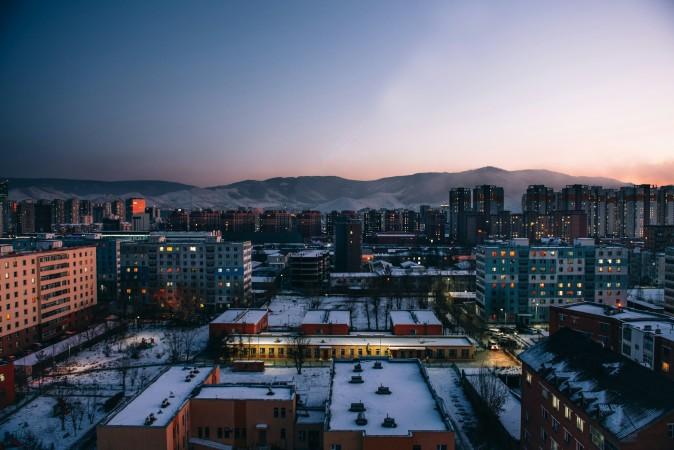
Winter in Ulaanbaatar - © duku. Fill
Cultural Etiquette in Ulaanbaatar
Respecting local customs and traditions is crucial when visiting Ulaanbaatar. By following these cultural norms, you will show respect for Mongolian traditions and make a positive impression on the locals, enhancing your travel experience in Ulaanbaatar.
- Greetings: When meeting someone, a light handshake and a slight bow are customary. For elders or people of higher status, it is polite to support your right elbow with your left hand during the handshake.
- Accepting Offerings: Accept food and drink offered by your host graciously. Refusing hospitality may be considered rude.
- Seating Etiquette: When sitting, avoid pointing your feet at anyone or towards the altar, if present. Sit with your feet flat on the floor or tucked under you.
- Giving Gifts: When visiting a Mongolian home or during special occasions, it is customary to bring a small gift. Suitable gifts include sweets, fruits, or souvenirs from your home country. Avoid giving sharp objects, as they symbolize cutting off relationships.
- Presenting Gifts: When presenting a gift, use both hands or your right hand supported by your left. It's polite to give and receive gifts with a slight bow and a smile. The recipient may not open the gift immediately, as it's considered respectful to do so later.
- Traditional Attire: Wearing traditional Mongolian clothing, like the deel, during festivals and special occasions is appreciated and seen as a mark of respect.
- Seeking Permission: Always ask for permission before taking photos of people, especially monks and locals in traditional attire. Respect their privacy and cultural sensibilities.
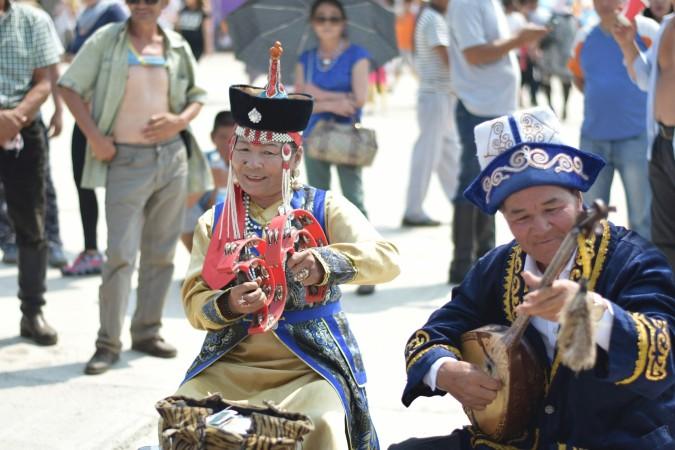
Ulaanbaatar locals in tradition attire - © Belgutei
Essential Travel Information
Getting Around Ulaanbaatar
Getting around Ulaanbaatar and exploring its surroundings is relatively easy, thanks to various transportation options.
- Public Transportation: Ulaanbaatar has an extensive bus network that covers most parts of the city. Buses and trolleys are affordable and frequent, making them a convenient option for getting around. Tickets can be purchased on board or using a prepaid transit card.
- Taxis: Taxis are readily available throughout the city. It's advisable to use metered taxis or agree on a fare before starting the journey. Official taxis are usually identifiable by their yellow license plates.
- Car Rentals: Several rental agencies offer cars for hire, allowing you to explore Ulaanbaatar and its surroundings at your own pace. International driving permits are usually required.
- Walking: Many of Ulaanbaatar's attractions are within walking distance of each other, especially in the city center. Walking is a great way to explore the city's streets and experience its vibrant atmosphere.
- Biking: While less common, biking is an option, especially during the warmer months. Some rental shops provide bicycles for tourists.
ATM & Banking Services
Access to banking services and ATMs in Ulaanbaatar is straightforward, ensuring you can manage your finances with ease. ATMs are widely available in shopping centers, hotels, and near major attractions, accepting international cards and offering English instructions. While most establishments accept credit or debit cards, carrying some cash is advisable, with Mongolian tögrög (MNT) being the local currency dispensed by ATMs. Major banks throughout the city provide essential services like currency exchange, wire transfers, and cash advances, with official locations recommended for the best rates.
Where to Stay in Ulaanbaatar
Ulaanbaatar offers a diverse range of accommodation options to suit different budgets and preferences. Luxury hotels provide upscale amenities, fine dining, and convenient central locations, making them ideal for those seeking comfort and proximity to major attractions. Mid-range hotels offer modern amenities, cozy rooms, and a blend of comfort and affordability, ensuring a pleasant stay with friendly service. For budget-conscious travelers, hostels and guesthouses provide clean, affordable accommodations with a welcoming atmosphere, perfect for backpackers and those exploring on a budget. Additionally, traditional ger camps outside the city offer a unique experience of Mongolian living, combining the charm of traditional gers with modern comforts amidst beautiful natural scenery.
Articles for you

Explore Yala National Park - Sri Lanka Travel, Asia
Tucked away in Sri Lanka’s southeastern corner, Yala National Park is where wild nature meets deep tradition. Known worldwide for its leopard population, the park is also home to elephants, sloth bears, crocodiles, and hundreds of bird species. Beyond wildlife, Yala opens doors to a cultural landscape dotted with ancient temples, Buddhist ruins, and coastal villages. For travelers seeking more than just a safari, Yala offers a chance to explore eco-tourism, local communities, and sacred heritage sites.
Population: The Yala National Park area doesn’t have a human population.
Economy: The economy around Yala National Park thrives on a blend of eco-tourism, agriculture, and local services. Safari tours, eco-lodges, and cultural experiences drive steady income for nearby towns like Tissamaharama and Kataragama, supporting thousands of families.
Landmarks: Famous for Block I of Yala and wildlife encounters, including elephants, sloth bears, crocodiles, and exotic bird species.

Explore Galle - Sri Lanka Travel, Asia
Nestled on Sri Lanka’s southern coastline, Galle is a vibrant city where history meets the sea. Its cobbled streets, colonial architecture, and serene beaches make it a must-visit destination for travelers seeking a blend of culture, adventure, and relaxation. A UNESCO World Heritage site, Galle captivates visitors with its Dutch Fort, bustling markets, and friendly locals. Whether you’re exploring the ramparts at sunset or savoring fresh seafood by the shore, Galle promises an unforgettable journey into Sri Lanka’s heritage.
Population: Approximately 113,000 in 2023.
Economy: Galle’s economy thrives on tourism, trade, and fisheries. The city’s historic fort, colonial architecture, and coastal charm draw thousands of international visitors each year, making tourism its main economic driver. Fishing remains vital for local livelihoods, supplying fresh seafood across the region.
Landmarks: Famous for the Galle Fort, Dutch Reformed Church & Maritime Museum, and Unawatuna Beach.

Explore Bentota - Sri Lanka Travel, Asia
Nestled along Sri Lanka’s southwestern coast, Bentota is a tropical paradise that blends golden beaches, vibrant culture, and thrilling adventures. Famous for its calm waters, luxury resorts, and scenic river estuary, Bentota has become a top destination for travelers seeking both relaxation and authentic experiences. From serene beach walks at sunrise to adrenaline-pumping water sports, this coastal town offers a perfect balance of leisure and exploration. With its proximity to Colombo and Galle, Bentota is easy to reach, making it an ideal stop for both short escapes and extended holidays.
Population: Approximately 37,000 in 2023.
Economy: Bentota’s economy thrives mainly on tourism, which drives local businesses such as hotels, restaurants, and wellness retreats. The town also benefits from fishing, coconut cultivation, and handicrafts like wood carving and batik textiles. Many residents rely on the growing demand for water sports and Ayurvedic treatments, making tourism the backbone of both income and employment in the area.
Landmarks: Famous for Bentota Beach, Bentota River Safari, and Kande Vihara Temple.

Explore Mirissa - Sri Lanka Travel, Asia
Mirissa is a charming coastal town on Sri Lanka’s southern shoreline. Known for its golden beaches, turquoise waters, and vibrant marine life, it has become a must-visit stop for travelers exploring the island. Many come for whale watching, surfing, and sunset views at Coconut Tree Hill, but Mirissa offers much more than postcard beauty. The fishing boats you see anchored by the bay carry generations of stories. Local traditions, delicious cuisine, and a laid-back rhythm of life shape every visitor’s experience.
Population: Approximately 4,700 in 2023.
Economy: Mirissa’s economy is largely shaped by its coastal location. Fishing has long been the backbone of local livelihoods, with generations relying on the Indian Ocean for income. In recent decades, tourism has become the main driver of growth, thanks to whale watching, surfing, and beachside hospitality.
Landmarks: Famous for Mirissa Beach, Coconut Tree Hill, and Parrot Rock Bridge.

Explore Nuwara Eliya - Sri Lanka Travel, Asia
Tucked away in the Central Highlands of Sri Lanka, Nuwara Eliya is often called “Little England”. With its rolling tea plantations, cool misty mornings, and colonial charm, this mountain town feels like a step into another world. Travelers come here to breathe fresh air, walk through flower gardens, sip the finest Ceylon Tea, and enjoy a pace of life far from the island’s busy cities. Whether you’re drawn by scenic landscapes, heritage architecture, or the warmth of its people, Nuwara Eliya is a destination that blends nature, culture, and history in perfect harmony.
Population: Approximately 781,000 in 2023.
Economy: Nuwara Eliya’s economy thrives mainly on tea production, as it sits in the heart of Sri Lanka’s central highlands, famous worldwide for Ceylon Tea. The city also benefits from a growing tourism industry, attracting visitors with its colonial charm, cool climate, and scenic landscapes.
Landmarks: Famous for Gregory Lake, Hakgala Botanical Garden, and Victoria Park.

Explore Sukau - Malaysia Travel, Asia
Nestled on the banks of the Kinabatangan River in Sabah, Malaysian Borneo, Sukau is a destination where wildlife, culture, and conservation come together. Known as one of Asia’s top spots for river safaris and eco-tourism, this quiet village offers a front-row seat to encounters with Bornean orangutans, pygmy elephants, proboscis monkeys, and exotic birdlife.
Population: Approximately 1,400 in 2019.
Economy: Sukau’s economy is shaped by its riverine location and natural resources. Traditionally, the Orang Sungai community relied on fishing, small-scale farming, and forest gathering for their livelihood. Today, the village has shifted toward eco-tourism, with river cruises, jungle trekking, and homestays providing income.
Landmarks: Famous for the Kinabatangan River cruises, Gomantong Caves, and Ox-bow lakes and wetlands.
